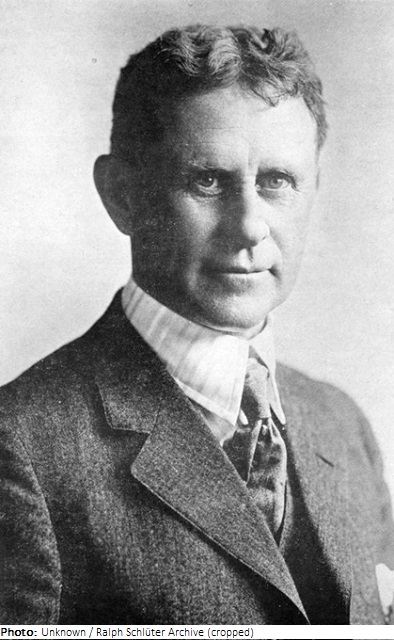Alexander Proctor

Biographical information
| Roles | Competed in Olympic Games |
|---|---|
| Sex | Male |
| Full name | Alexander Phimister•Proctor |
| Used name | Alexander•Proctor |
| Born | 27 September 1860 in Bosanquet, Ontario (CAN) |
| Died | 4 September 1950 (aged 89 years 11 months 7 days) in Palo Alto, California (USA) |
| NOC |  United States United States |
Biography
Born in Canada and raised in Colorado, Alexander Proctor was a genuine Westerner whose love of the American wilderness – social and natural history – never left him. Although he dubbed himself the “sculptor in buckskin,” Proctor’s academic training made him as comfortable in international artistic circles as he was hunting grizzlies in the Rocky Mountains. He studied at the Art Students’ League and the National Academy of Design in New York City, and later at the Académies Julien and Colarossi in Paris, where he learned to translate his keen observations into works of art that memorialized the West without sentimentality.
Proctor dedicated his life to creating monumental statues throughout the United States and made his smaller bronzes available to the general public. His works of art celebrate both famous heroes and anonymous, iconic figures. He mainly worked on life-sized wild animal sculptures.
Proctor’s genius in depicting animals can be seen in the Tigers in front of Princeton University’s Nassau Hall. The Animal House in New York’s Zoological Gardens showcases his monkeys, elephants, rhinoceros and frogs on its frieze. Lions flank Pittsburgh’s Frick Building, and four Buffalo guard the Q Street Bridge in Washington, D.C. His last monumental commission was Mustangs, which resides on the campus of the University of Texas at Austin.
His bronze statue of the Broncho Buster was created in 1920 and is located in Civic Center Park in Denver, and is one of two statues that Proctor created for this park. The reference in the art catalog notes that the exhibited version was on loan from George Dupont Pratt (1869-1935), a wealthy hunting companion of the artist, proves that it was actually the 72 cm high sculpture Buckaroo, created in 1914 and cast in bronze in 1915. Proctor then enlarged it for the Broncho Buster. One of three copies owned by Pratt came to the Metropolitan Museum in New York in 1935 as part of his legacy to the museum.
Results
| Games | Discipline (Sport) / Event | NOC / Team | Pos | Medal | As | |
|---|---|---|---|---|---|---|
| 1928 Summer Olympics | Art Competitions |  USA USA |
Alexander Proctor | |||
| Sculpturing, Statues, Open (Olympic) |